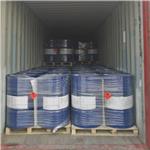Cyclobutane is a colorless, flammable, explosive gas.
Cyclobutane is produced from cyclobutene and reutilized in
catalytic cracking processes.
ChEBI: Cyclobutane is a cycloalkane and a member of cyclobutanes.
Gas that condenses to a liquid at 55°F. Density of liquid 0.7 g / cm3. Insoluble in water. Soluble in alcohol, acetone and ether. Under prolonged exposure to fire or intense heat the containers may rupture violently and rocket.
Highly flammable. Insoluble in water.
CYCLOBUTANE may be incompatible with strong oxidizing agents like nitric acid. Charring may occur followed by ignition of unreacted material and other nearby combustibles. In other settings, mostly unreactive. Not affected by aqueous solutions of acids, alkalis, most oxidizing agents, and most reducing agents.
Vapors may cause dizziness or asphyxiation without warning. Some may be irritating if inhaled at high concentrations. Contact with gas or liquefied gas may cause burns, severe injury and/or frostbite. Fire may produce irritating and/or toxic gases.
EXTREMELY FLAMMABLE. Will be easily ignited by heat, sparks or flames. Will form explosive mixtures with air. Vapors from liquefied gas are initially heavier than air and spread along ground. CAUTION: Hydrogen (UN1049), Deuterium (UN1957), Hydrogen, refrigerated liquid (UN1966) and Methane (UN1971) are lighter than air and will rise. Hydrogen and Deuterium fires are difficult to detect since they burn with an invisible flame. Use an alternate method of detection (thermal camera, broom handle, etc.) Vapors may travel to source of ignition and flash back. Cylinders exposed to fire may vent and release flammable gas through pressure relief devices. Containers may explode when heated. Ruptured cylinders may rocket.
This easily liquefiable gas is dried over Na at melting ice temperature for 4days and distilled at low temperature through a Podbielniak (p 10) precision still. A dry sample has been prepared by passage through P2O5 and distilled repeatedly until all fractions had similar vapour pressures at 0o. [Cansson & Wat J Org Chem 14 31 1949, Heisig J Am Chem Soc 63 1698 1941, Stodola & Heisig Org Synth Coll Vol III 213 1955.]

